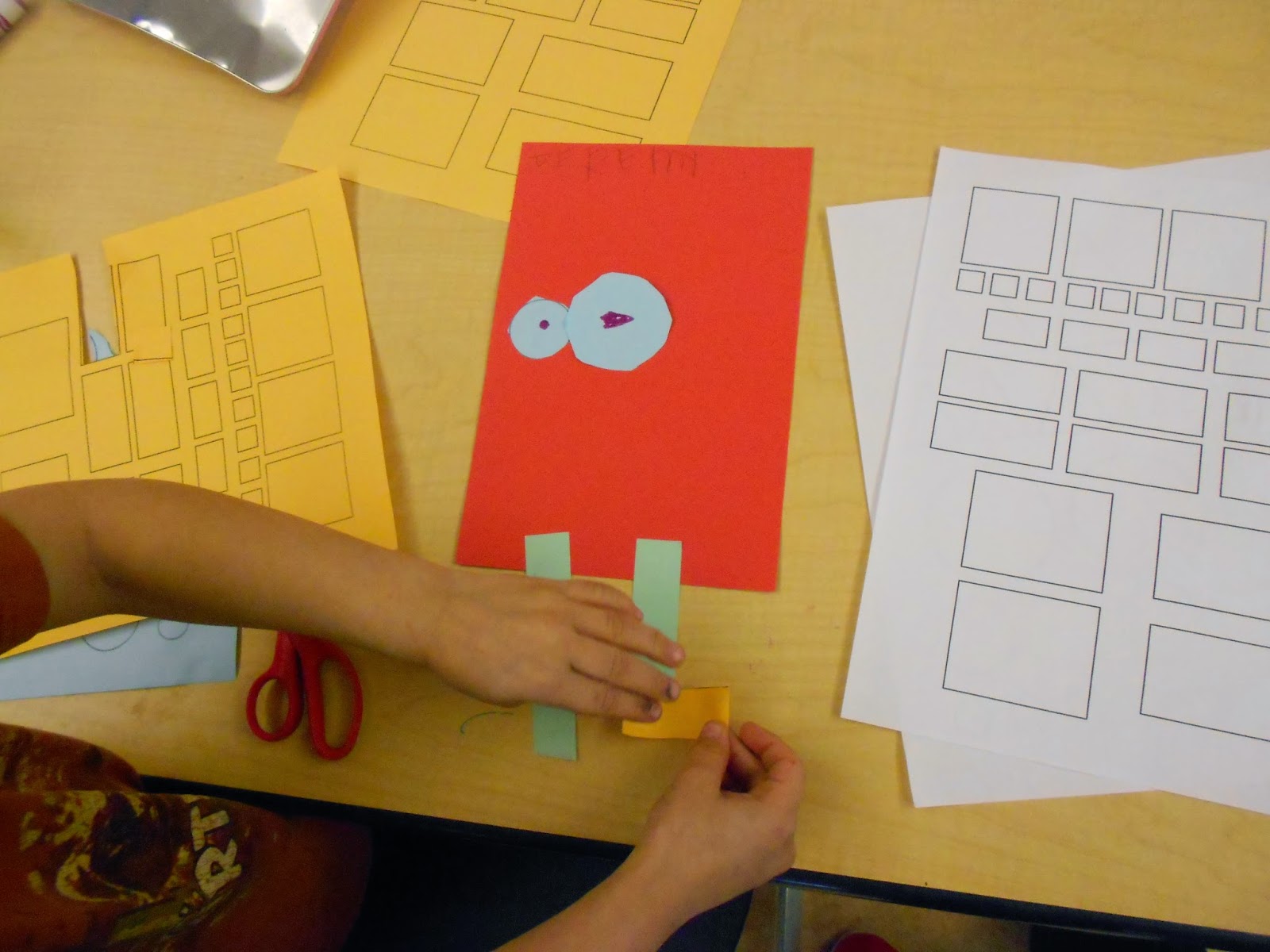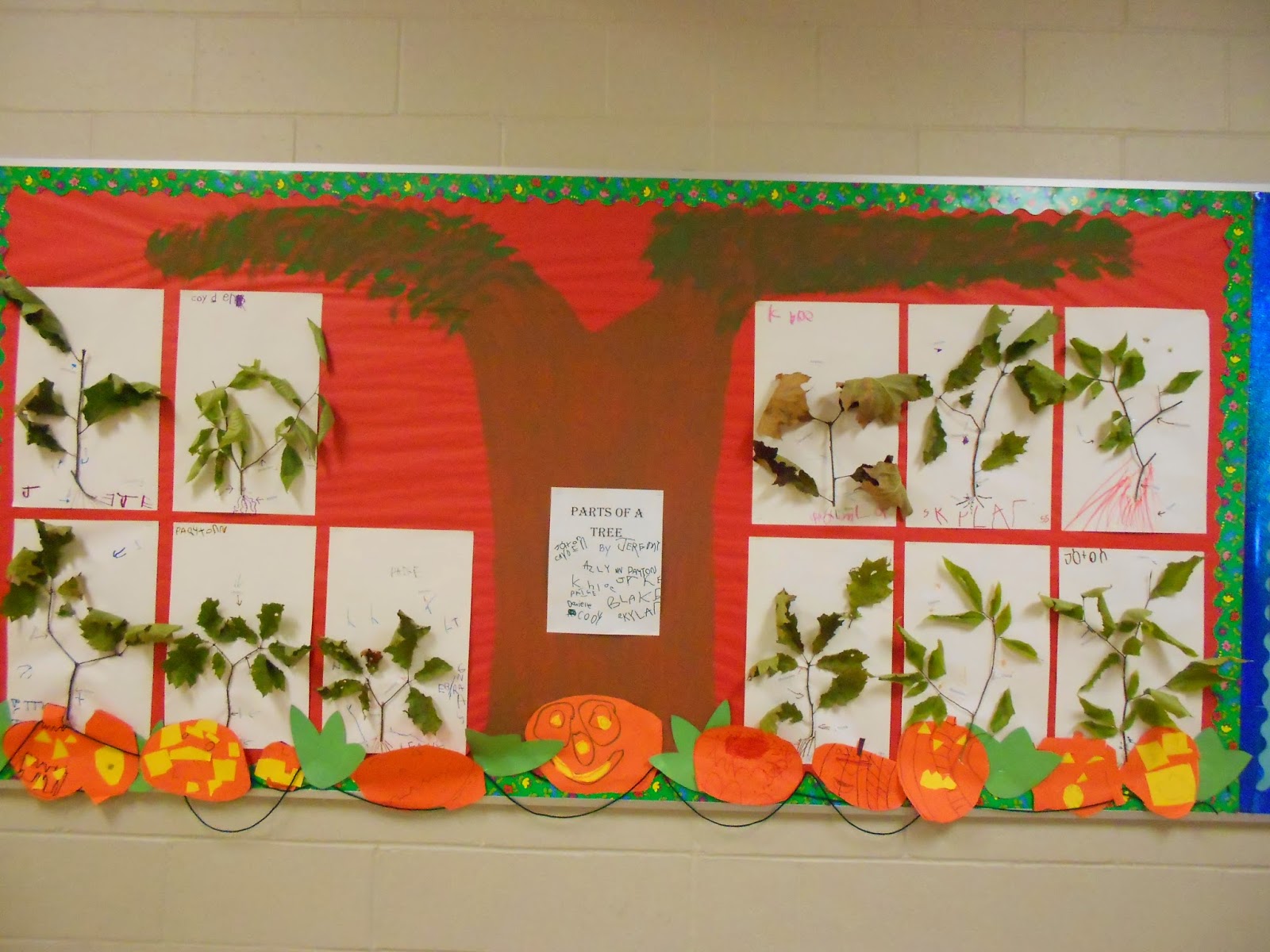During the third lesson of my kindergarten mathematics unit, I was able to bring together shapes and patterns in a fun and creative way. We started out the day by reviewing the names of our shape friends (as seen previously seen here).
Next, we watched Bert and Ernie sing to us about patterns. We even danced and sang along! I was so relieved when students knew who they were... I was honestly nervous they would have no clue!
Once we sang and danced along with Bert and Ernie, we used a flipchart from Promethean Planet to help us visualize patterns. We started by identifying patterns by size, shape, or color. Next, we looked at some patterns and identified them. We also figured out how to extend patterns, and we created our own as a class!
I wanted to integrate shapes and patterns together in this math lesson because I wanted to take the time to have students make their own shape monsters!
 |
| My example |
I showed my students my example of a shape monster, and we counted the number of shapes I used together. As we counted, I recorded the correct number of each shape used on the little shape recording sheet. I also encouraged them to use patterns on their shape monsters.
 |
| A collection of shape monster inspiration pictures I found on Pinterest. These examples were projected on the Promethean Board as students worked. |
I knew that this assessment would be very time consuming, so I made some modifications. Instead of having students cut out their own shapes and color them, I decided to make shape guide sheets to eliminate the coloring time. Creating shapes can be difficult to draw, but when a child developing their motor skills is asked to freely cut a shape out with scissors... hello, meltdown!
Here is a picture of all of the elements I gave students to help them create their monsters. I gave everyone a pre-cut red piece of construction paper in a rectangle shape for their monster bodies. All students also received two skinny green construction paper rectangles to use as legs.
 |
| Little hands hard at work! |
For my mathematics project, I was required to create a rubric and hold an interview with students so I could assess their mathematical thought process. My job was to include a verbal, written, and demonstrative component into one assessment. Shape monsters were perfect for this purpose.
The overall goal of this assessment was to see if students could correctly identify two dimensional shapes. The written component took the form of the shape recording sheets, where students sat with me at my desk and counted up the total number of each shape (circle, triangle, rectangle, and square) they used to make their monster. Kindergarten students aren't writing yet, but they do know how to write their numbers! This also touched upon counting and cardinality - an ongoing unit for this age.
The verbal portion of this assessment was when I asked students to point to the shapes they used and name them correctly. This let me know which students were still struggling with shape identification.
Finally, students were able to demonstrate their knowledge of shapes by using pattern block manipulatives. I took out a triangle and a square, and asked students if they were the same shape. When they told me no, I asked them to explain and show me why the shapes weren't the same. Students picked up the shapes, counted the sides with their fingers, and verbally expressed the differences between the two shapes.
 |
| Source |
My students didn't feel as though it was an assessment. I simply called each student over to my desk so that they could "tell me about their shape monsters," and they all had the biggest grins on their faces when they came over to talk! They were so happy to get to tell me all about the shapes they used, and they loved showing off their monsters, I made sure I didn't seem like I was putting them in the "hot seat," but rather, just having a conversation. It worked well!
This lesson gave me a better picture of where my students are in their learning of two-dimensional shapes, and it has helped me figure out the best way to introduce three-dimensional I am so happy with how this lesson turned out, and students were so happy to take home their little shape monsters to show their families!



























.JPG)
.JPG)
.JPG)









